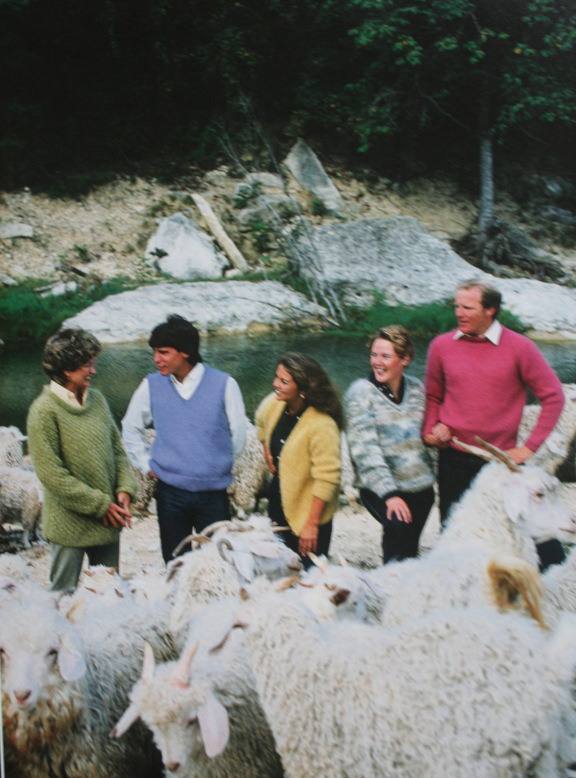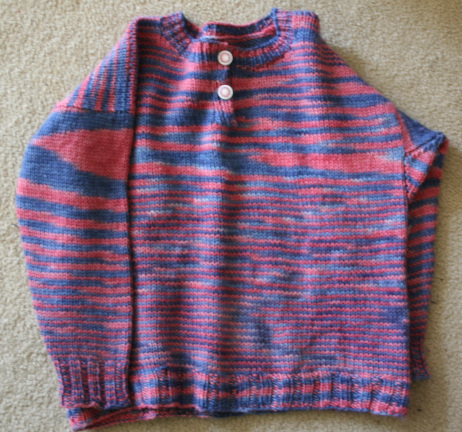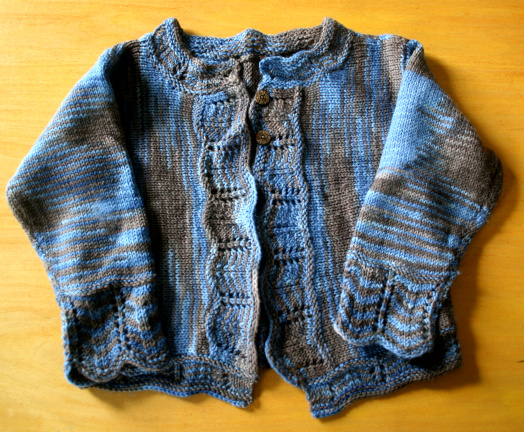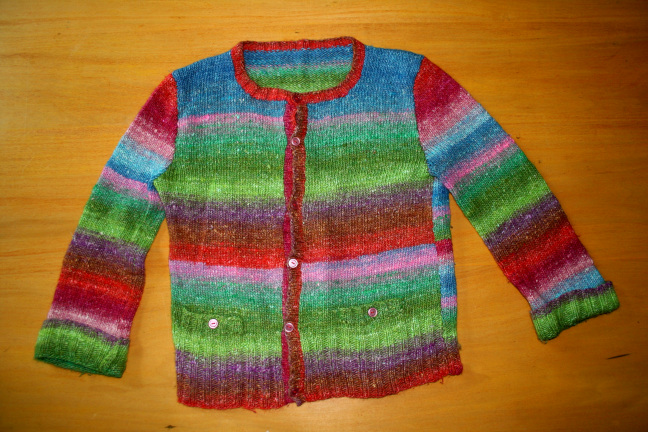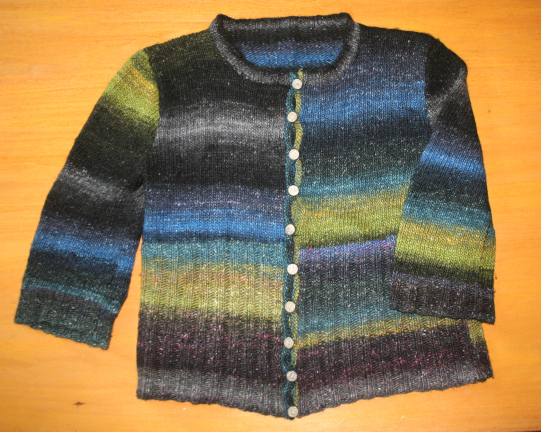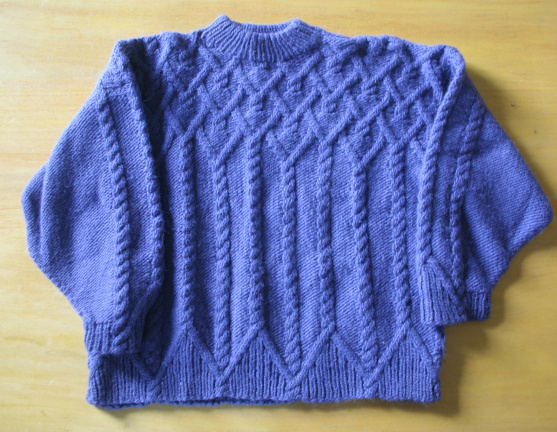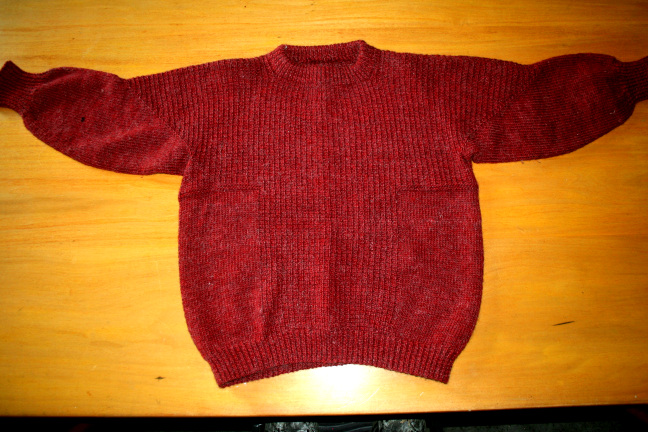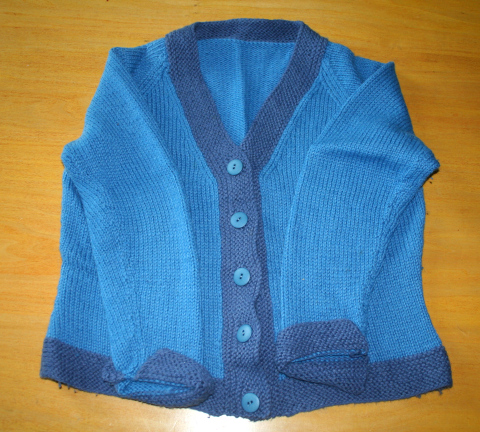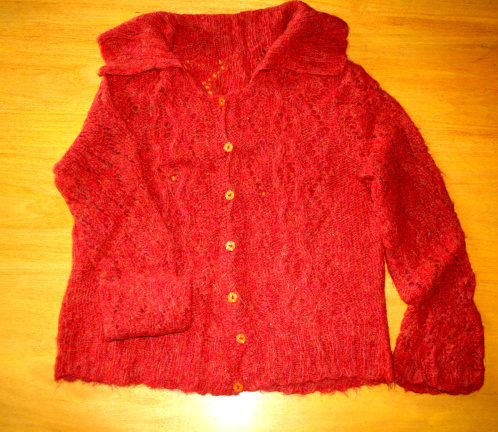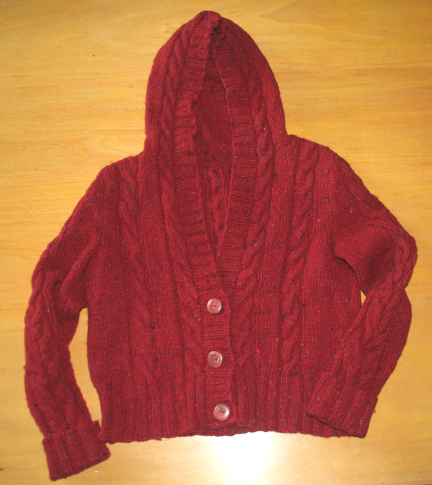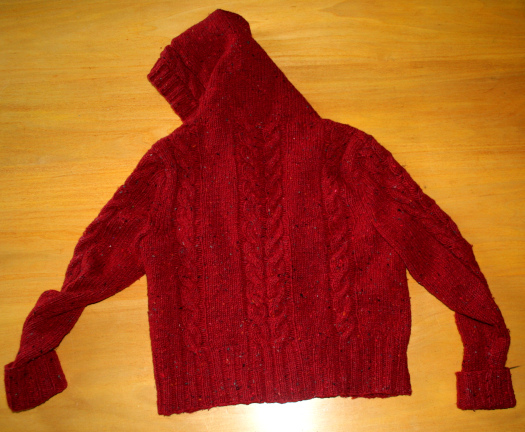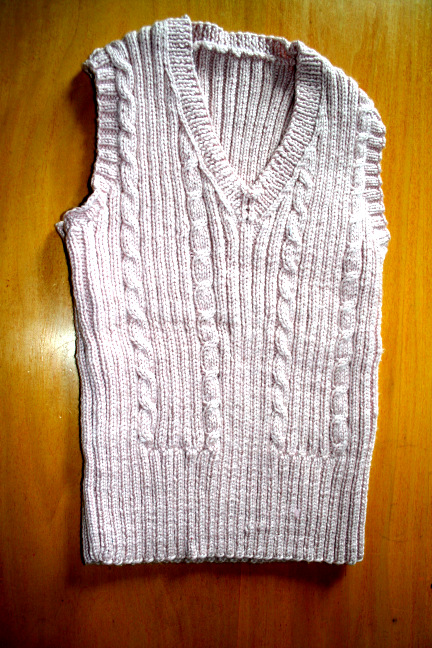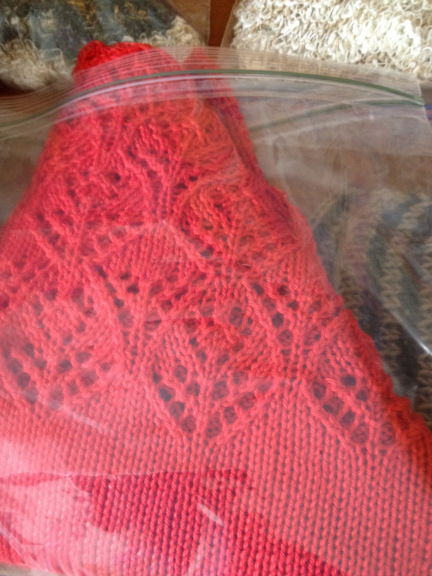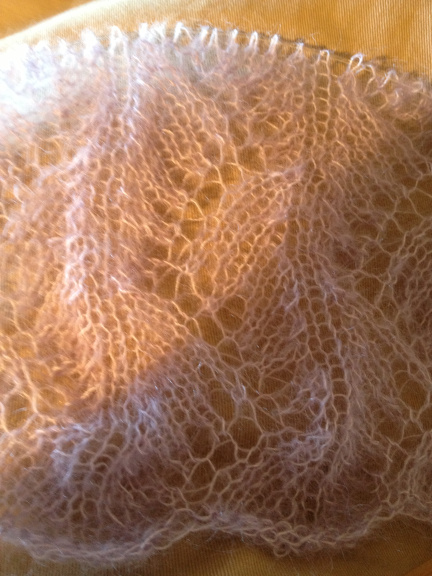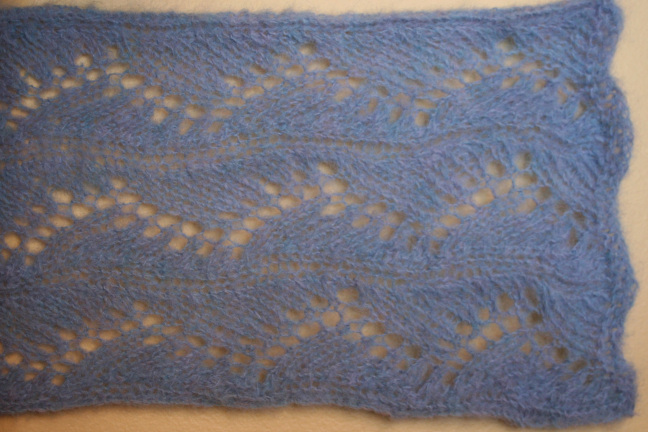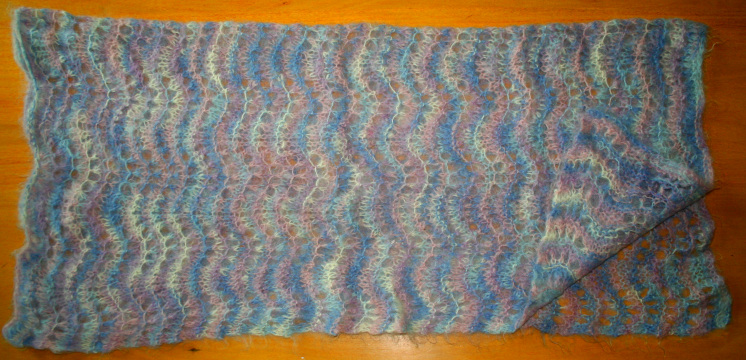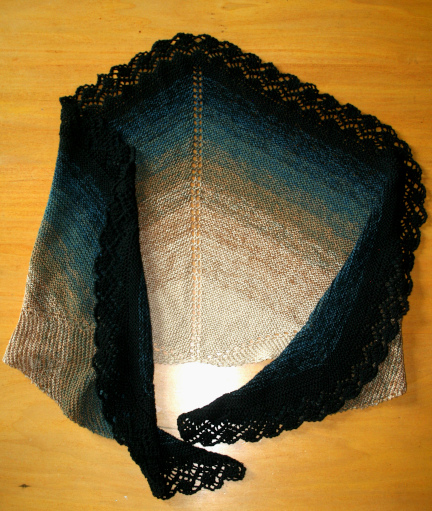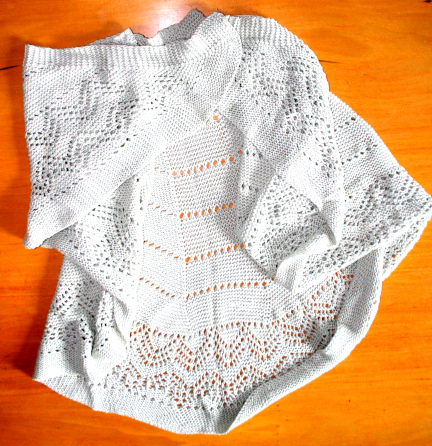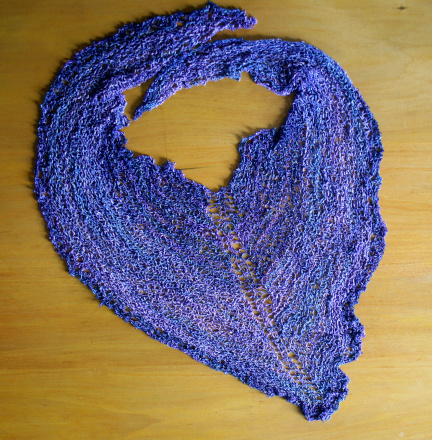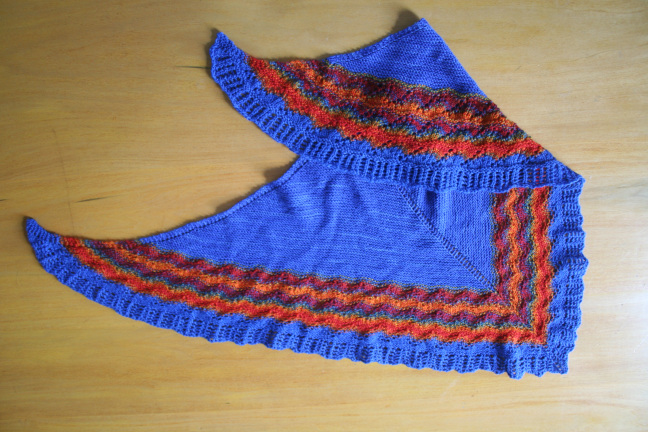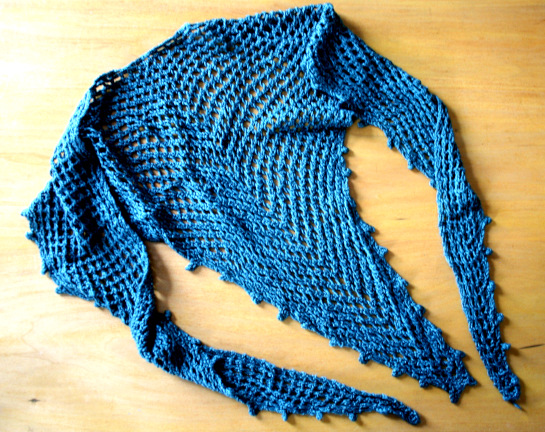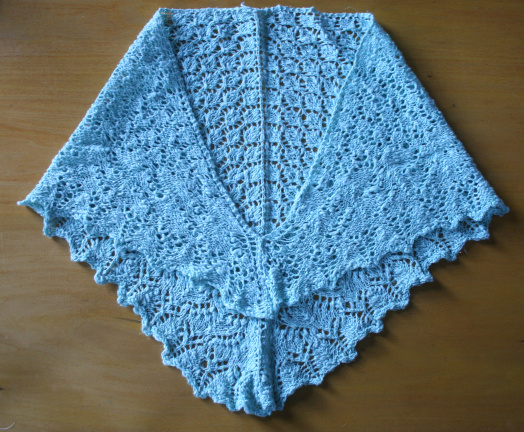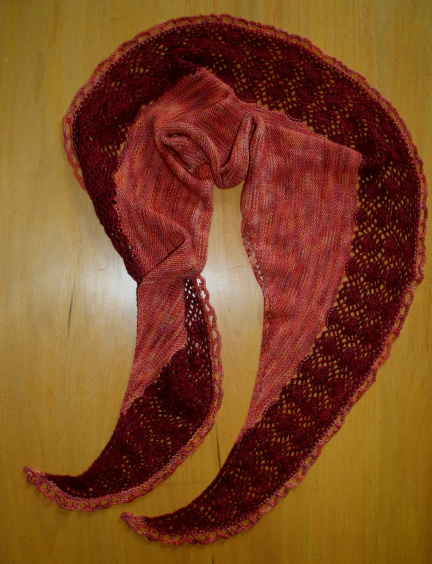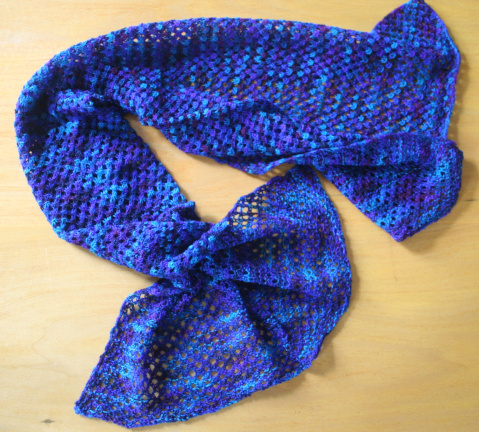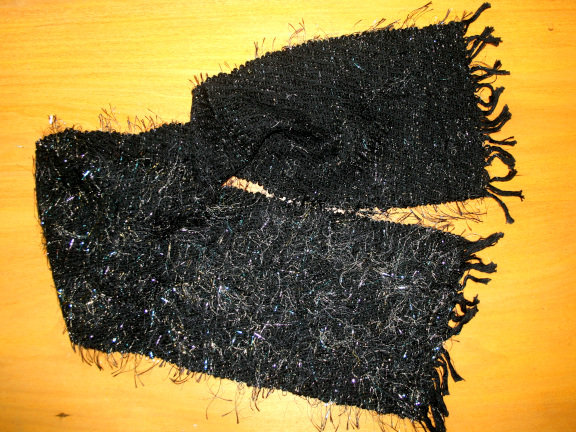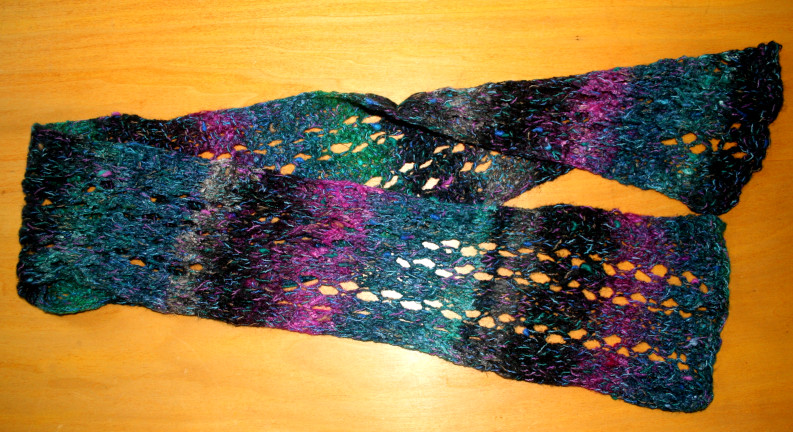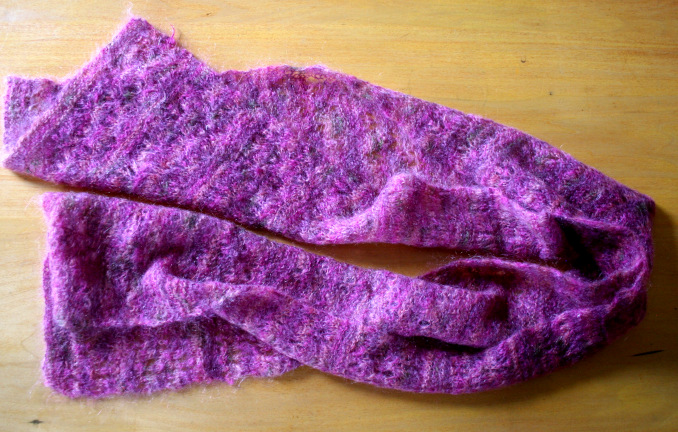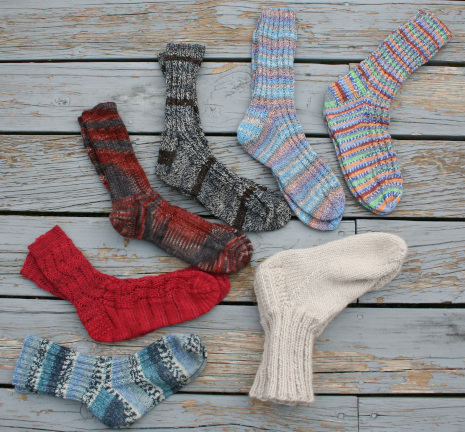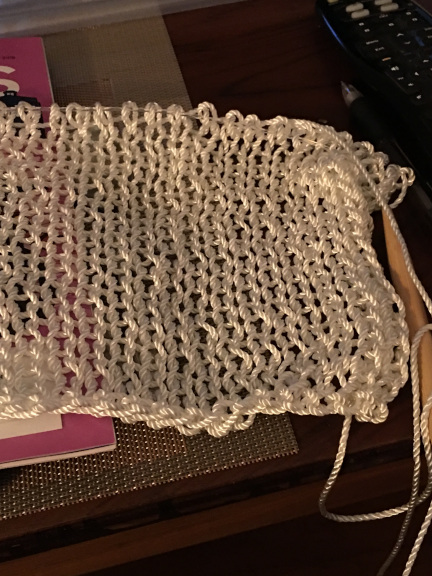At age 11 or 12, Ellen probably learned to knit from her Aunt Minnie. Early projects were likely cothing for her dolls. But before long, Ellen went on to other things, and did not do much knitting until moving to New Hampshire. The early projects were sweaters. Both Ellen and Gene knit many "Icelandic" pattern sweaters using the Lopi yarn popular at the time. We even sold a few.
Once we added sheep to the farming and started to trade fleece for yarn at Bartlett Yarns, we both started to knit more and soon were selling the Bartlett yarn from our kitchen. The story of Ellen's yarn shop, Andes Yarns, is told on the New Hampshire Page and on the Weaving Page. But Ellen soon was teaching knitting at the shop as well as continuing to make sweaters. The yarn shop mooved first into the second story above the woodshed, workshops, and garage in the long "ell" connecting the house to the barn, and later into the south-facing side of the barn itself when we converted the space in the late 1970s.
